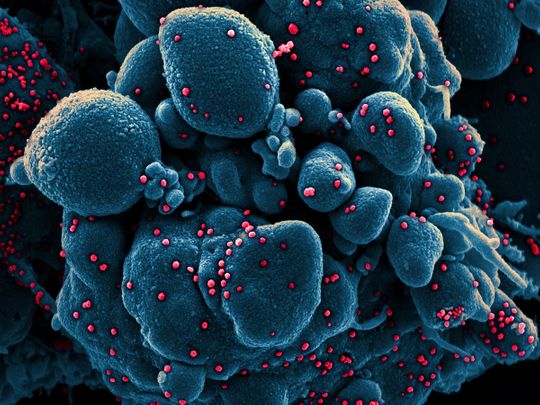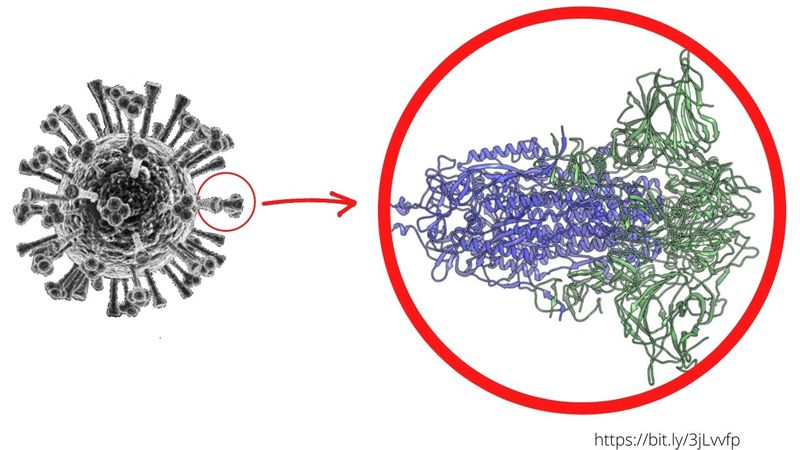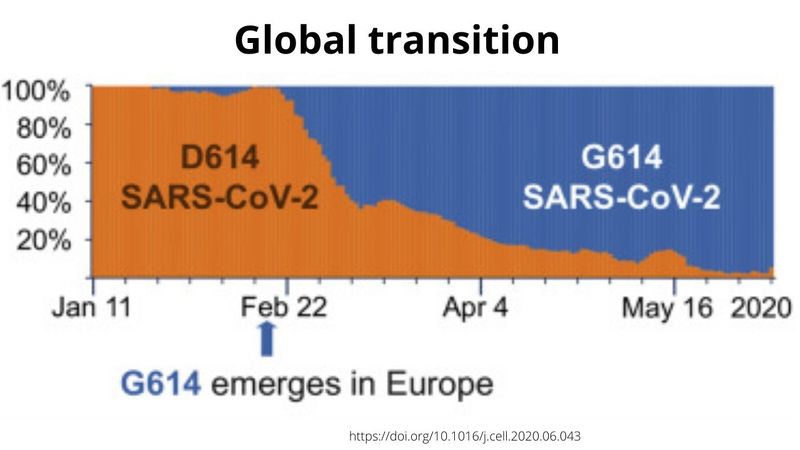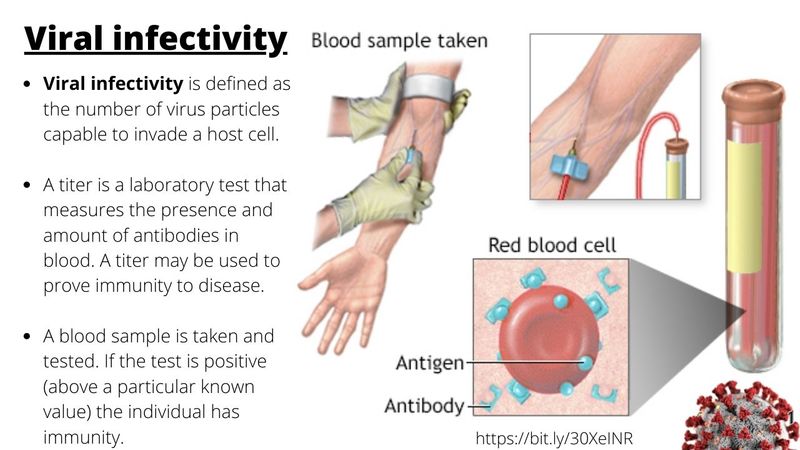Coronavirus: Infectiousness vs severity, what’s the difference?
[ad_1]

Image Credit: NYT
Dubai: A new report on Monday (August 17, 2020) stated a startling discovery by Malaysian scientists about a more infectious mutant coronavirus.
The strain is “10 times more infectious,” the report stated, citing quoting authorities in Kuala Lumpur.
They have detected the D614G strain (also known as the “G” strain, or simply as “G614”) of the SARS-CoV-2 in the South-east Asian nation.
The “10x” uses the previously dominant D614 strain as the base.
The report was foreboding: “The strain could mean that existing studies on vaccines may be incomplete or ineffective against the mutation,” it stated, quoting Malaysia’s Director-General of Health Noor Hisham Abdullah.
What does this actually mean?
The emerging predominance of the G strain found in Malaysia aligns with a growing global trend.
This D614G mutation has become the predominant coronavirus variant in Europe and the US, before they were seen rising in Asia, where the virus is thought of have jumped from bats to humans.
Does that mean the strain found in Malaysia is more infectious?
Yes. There’s evidence that this strain has indeed become more infectious, sort of like the flu virus, whose different strains infect millions around the world in winter.

Image Credit: AP
During the 2019-2020 flu season (September to February), the US National Institute of Allergy and Infectious Diseases (NIAID) reported that the flu had infected at least 26 million Americans and killed at least 14,000 people.
The flu infection fatality rate (IFR, the number of deaths against total number of infections) is estimated at 0.01%.
As for SARS-CoV-2, preliminary data also suggest that the coronavirus G strain has become less deadly. The final IFR for this strain is yet to be established.
Infectious disease specialists say that as infection rates go up, severity from the G strain is seen tapering off.
article published in the journal Cell by Los Alamos National Laboratory researchers confirmed that G strain has become dominant and more common — in almost every nation and region.
“Any one mutation may rise to very high frequency across the world, just because of random chance,” explains Kristian Andersen, a computational biologist at Scripps Research. “This happens all the time.”
Does the predominance of G (D614G) mutation mean a moderate effect?
Science reports there’s “a weak evidence” of a moderate effect from the changes.
Most of the changes virologists have seen so far don’t affect how the virus behaves. However, few changes may alter the disease’s transmissibility or severity, the Cell article added.
What about the infectivity of the G strain?
This spiky protein acts as the “key” that enables the coronavirus to break through human cells efficiently in a sort of lock-and-key mechanism.
The SARS-CoV-2 viral spike, also known as as “exo-protein”, is comprised of about 1,300 amino acids.
Amino acids serve as basic building blocks of viruses. In the mutant virus, the genetic instructions for just one of those amino acids — number 614 — switched from a “D” (short for aspartic acid) variant to a “G” (short for glycine).
In another study, a research team from Scripps had confirmed this “infectivity boost” in the G strain. However, researchers noted that while the G mutation increases infectivity, it reduces “shedding”.
What is viral “shedding”?
In virology, “shedding” stands for the expulsion and release of virus progeny (produced in the host, i.e. a COVID-19 patient) following rapid reproduction.

Image Credit: Andrew Ward lab / Scripps Research
It only refers to viral reproduction – not the act of infecting another person, or “host” transfer.
Would this mutation have an impact on severity of the COVID-19?
No. The WHO said there’s no evidence that the predominance of G strain leads to a more severe disease.
Why do viruses mutate?
By nature, viruses are subject to mutations, and different viruses can recombine their genomes (genetic material of an organism). It has something to do with their “survival”.
If a virus is too lethal that it kills its host immediately, the virus also dies. A dead person (or host) cannot spread an infection. If the virus does infect enough hosts — but does not kill them — the virus has a better chance of surviving, transmitting to other hosts, then using that host to reproduce, and spread further.
Virologists explain that the mutation has become “so common” because it helps the virus spread faster. Science has also reported that the pandemic virus is only “slowly mutating”.
However, Science said it remains unclear whether the virus’ potential to evolve into a nastier — or more benigh — direction, remains is unclear. That’s because it changes more slowly (at the rate of two changes per month) compared to other viruses. This gives virologists fewer mutations to study.

Image Credit: https://doi.org/10.1016/j.cell.2020.06.043
But some virologists also entertain another possibility: that SARS-CoV-2 was already well adapted to humans when it jumped into humans (reportedly at the end of 2019). It’s one evidence the virus has quietly honed its ability to infect people beforehand.
What about the efficacy of vaccines under development?
A paper published in Cell Press states that this mutation is unlikely to have a major impact on the efficacy of vaccines currently being developed.
How are viral mutations tracked?
Scientists from around the world collaborate in real time through the GISAID (Global Initiative for Sharing All Influenza Data), a cloud-based online database.
GISAID is a global science initiative and a primary source that provides open-access to genomic data of influenza viruses and the novel coronavirus responsible for COVID-19.

Through this database, tens of thousands of samples are collected from patients with COVID-19 (with sequence of the viral genetic code), and then uploaded for tracking.
Since the start of the COVID-19 outbreak and the identification of the virus, contributors to GISAID upload hundreds of new SARS-CoV-2 viral genomic sequences on a daily basis.
Researchers who collaborate through GISAID are now able to follow how the virus spreads, by tracking and comparing the sequences of SARS-CoV-2 genomes.
Scientists said most of the changes don’t affect how the virus behaves, but a few may change the disease’s transmissibility or severity.
What’s the evidence of the G mutation’s dominance?
Data uploaded from around the world on GISAID show the dominance of the G strain, from as early as April 2020.
Of the approximately 50,000 genomes of the new virus that researchers worldwide have uploaded to GISAID, which is shared by the world’s virologists, about 70 percent carry the mutation — officially designated D614G but known more familiarly to scientists as “G.”
GISAID sequences are generally linked to the location and date of sampling.
Based on a May 29, 2020 download of the GISAID data (when the Spike alignment included 28,576 sequences), the G strain has already shown its dominance (cov.lanl.gov).
WHAT IS GSAID?
The GISAID Initiative, originally known as a Global Initiative on Sharing All Influenza Data, involves public-private-partnerships between the initiative’s administrative arm Freunde of GISAID e.V., a registered non-profit association, and governments of the Federal Republic of Germany, the official host of the GISAID platform, Singapore and the US, with support from private and corporate philanthropy.
[ad_2]
Source link
